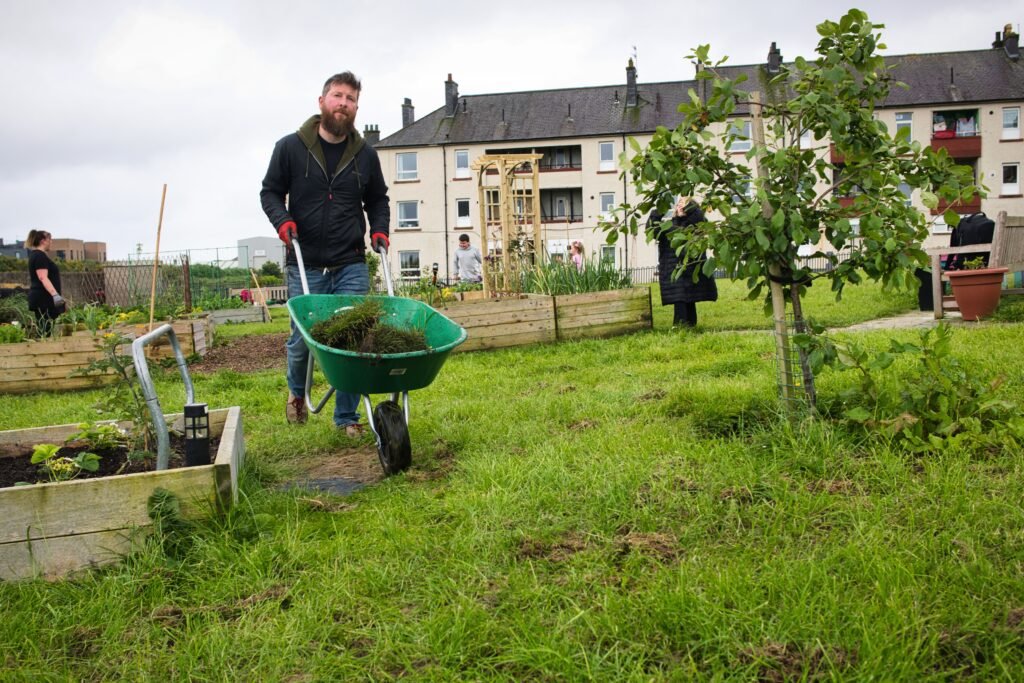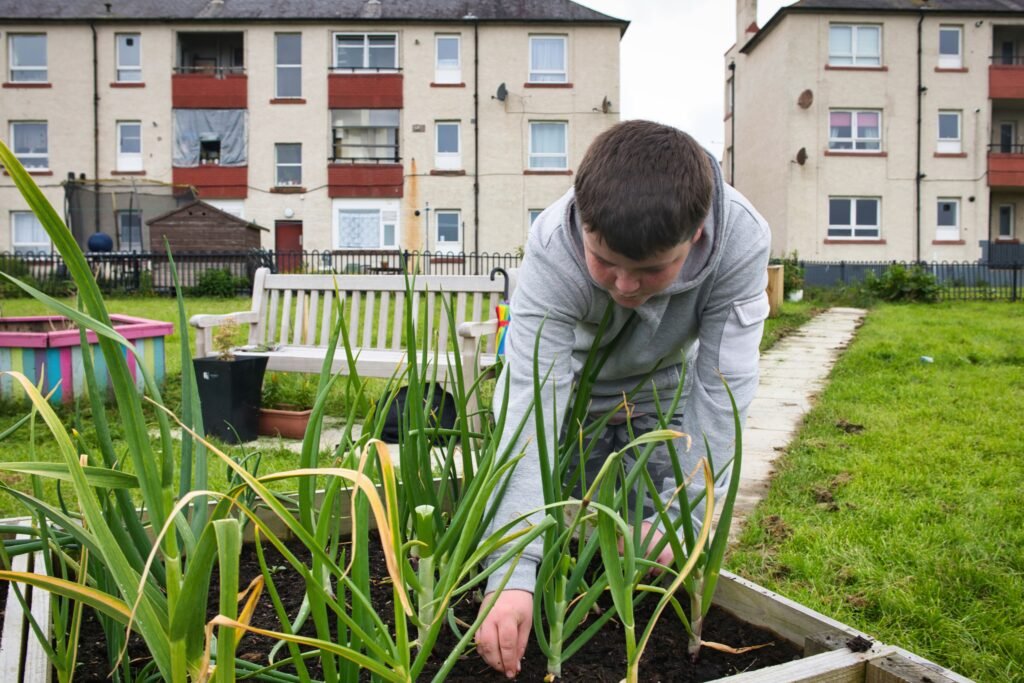“There is a real possibility that international supply chains will collapse… the best way to protect against this risk is to diversify and localise the sourcing of food.” Professor Tim Benton, Food security expert

With access to land, the right support and resources, communities can lead this transformation. Through a range of food initiatives, many have been doing it for years: connecting people to the food system and each other, fostering understanding of the issues and the opportunities to build food resilience and security, being radical and realistic about what is possible. It is not about the volume of food grown and distributed, but more importantly, the reconnection to the food system and each other. Their role is recognised in the recent Just in Case: 7 Steps to narrow the UK Civil Food Resilience Gap, a recent report published by the National Preparedness Commission. One of it’s big 5 ideas’ is to take a “Whole of society approach from national governments to households. Decentralised effort is more resiient. Engage with the public: honest about potential problems; practical about what can be done,” and one of it’s main actions is to “expand community growing: allotments, community gardens and farms and orchards, communal fruit harvesting, forest gardening, garden sharing.”
Yet, for many stakeholders who can support this positive movement, community-led food growing is still regarded as ‘nice to do’ rather than an essential component in building more local food resilience. We continue to take our food supply for granted. Early Covid restrictions in Scotland clearly demonstrated that communities with sustainable food initiatives and strong long connections were the first responders, and they continue to respond to it’s legacy through their role in the health and well-being of local people and places.
The publication of the first national food plan in the U.K., Scotland’s Good Food Nation Plan, is imminent; For it to have traction and teeth, we will need to grow more of our own, closer to home. The plan looks likely to call for more local food production, yet circa 80% of agricultural land in production in Scotland is used for animal feed or grains for the alcoholic drinks industry. SEFARI’s research concludes that despite various policies and campaigns aimed at increasing fruit and vegetable consumption in Scotland, our intake remains below the recommended, and Scotland relies heavily on imported fruit and vegetables.
We need to plan for how ALL communities can access and use suitable land, not just that designated for agriculture, to grow fresh produce all year- edible horticulture in spaces of all shapes and sizes, year-round through sheltered growing, supported to adapt to our changing climate.
We work with and know of thousands of pioneering communities and people across Scotland growing food together, a wonderfully diverse range of people. Together, we see a pathway where investment is well spent and allows all those excluded to participate and benefit. We know the collective endeavour to grow food produces much more ‘fruit’ than just that which is grown and distributed locally, including practical action for nature and climate.
We have a plan, starting with the existing foundation, a network of community led growing sites across the country in all settings, rural to urban, across Scotland, accelerating learning through sharing and attracting and delivering investment effectively on the ground, forinfrastrucuture, skills and training, with the option for skills guidance from well paid workers for every site. We don’t all have to don wellies and get dirty if we want to eat; we can participate in many different ways. Every intention and investment for this movement makes a difference, from believing what is possible, investing funds, contributing expertise in a wide range of skills and specialisms and sharing time and effort. It is low risk, high yield and increasingly urgent. To get involved contact us.
Karen Moore Davidson- Chair


Leave a Reply